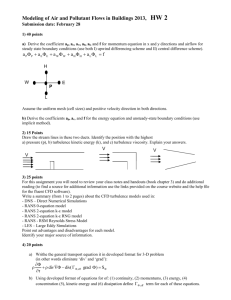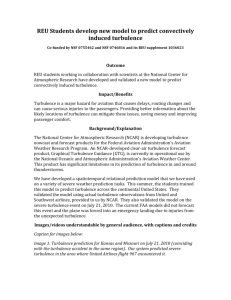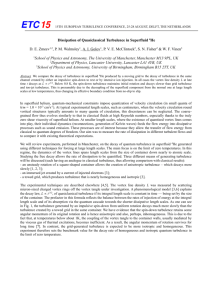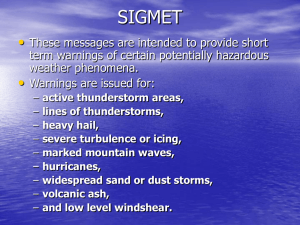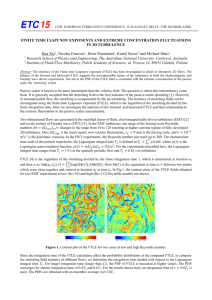CFD Study of the Flow in the Vicinity of a Subsea
advertisement
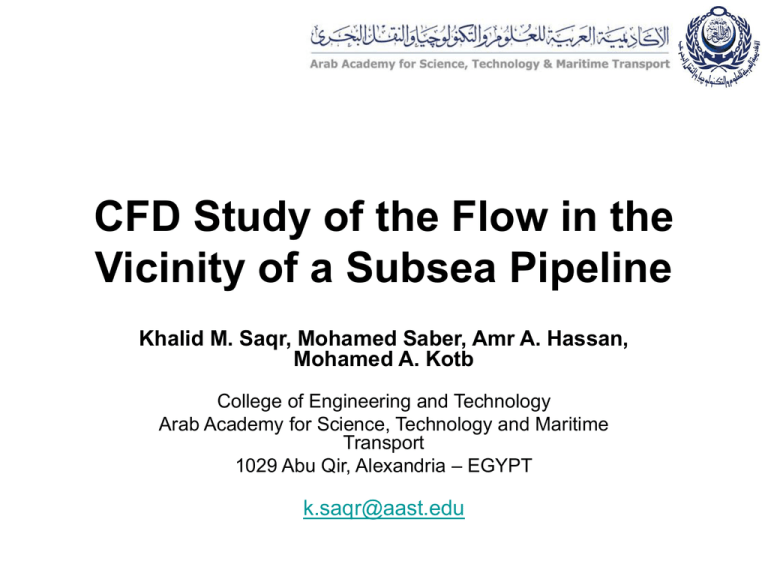
CFD Study of the Flow in the Vicinity of a Subsea Pipeline Khalid M. Saqr, Mohamed Saber, Amr A. Hassan, Mohamed A. Kotb College of Engineering and Technology Arab Academy for Science, Technology and Maritime Transport 1029 Abu Qir, Alexandria – EGYPT k.saqr@aast.edu 1. Problem outlines • Subsea pipelines are subjected to hydrodynamic stresses due to marine currents • These stresses may rupture the pipeline and cause financial losses and environmental hazards. • There is a demand to improve the methods used to protect subsea pipelines from hydrodynamic stresses • This paper presents a comparison between two protection methods. 1. Problem Outlines • Current protection methods – Trenching/Burying the pipeline into seabed. – Concrete weight coating. – Concrete mattress adding. – Rock dumping (covering). 1. Problem Outlines • The proposed double barrier method Pipeline Barrier Seabed 2. Methodology: Physical Model • Computational Fluid Dynamics (CFD) model L Trench in seabed b U H a Y X Trenching method Pipeline b a α Barrier b Seabed ranges from 0.1 to 0.75 a Double barrier method 2. Methodology: CFD Approach A survey of relevant literature showed that the current approaches involve: 1. Two and three dimensional models 2. Finite volume framework 3. RANS turbulence models 2. Methodology: Governing Equations • Continuity: U i 0 xi • Momentum: P 2Sij U jU i u j ui x j xi x j (1) 12 k ij • Reynolds stress closure: u j ui 2T S ij 3 (2) (3) • Turbulence models: – k – ε model Turbulence kinetic energy T U i k xi x j k x j k T S 2 (4) 2. Methodology: Governing Equations turbulence dissipation rate T 2 2 U i C 1 T S C 2 xi x j x j k k – Eddy viscosity T C k2 (5) Cμ = 0.09 – Realizable k-ε model T U i xi x j C1 max 0.43, 5 x j C 2 C1 S C 2 k 1 A0 AsU 1 As 6 cos arccos 6W W 3 k U * S ij S ij ij ij 8Sij S jk S ki S3 (6) 1 ui u j ij 2 x j xi 2. Methodology: Governing Equations – k-ω turbulence model Ui k xi x j * T x j Ui xi x j T k k ij U i * k xi 2 U T ij i x k x j j 5 9 3 40 9 1 * 100 2 * – SST k-ω turbulence model A hybrid model which applies the standard k-ε model in the near wall region and k-ω in the main stream region 2. Methodology: CFD Model Reliability Check Elementary computational model VERIFICATION Different grid resolutions Compare flow field obtained by different grids Refine grid resolution NO Predictions agree ? YES Select the optimum grid VALIDATION Test turbulence model Change model NO Best agreement with measurements ? Select best turbulence model Optimize numerical scheme Final Computational Model 2. Methodology: Validation •CFD Model Validation Comparison between CFD predicted pressure coefficient using four turbulence models and experimental measurements of [9] on the pipe wall. Cp P P 1 U 2 2 3. Results: Flow structure α=0 0.0 0.3 0.6 0.9 1.2 1.5 Flow direction 180o 90o α=0 270o 0o Figure 5. Contours of normalized velocity magnitude and vectors over a bare pipe Flow structure of the bare pipe 3. Results: Flow structure α = 0.1 α = 0.1 α = 0.25 α = 0.25 α = 0.5 α = 0.5 α = 0.75 α = 0.75 0.0 0.3 0.6 0.9 1.2 1.5 3. Results: α = 0.1 3. Results: α = 0.25 3. Results: α = 0.5 3. Results: α = 0.5 4. Conclusions 1. It can be concluded that the double barrier method is a prospective alternative to trenching at small aspect ratios. 2. With the difficulties faced during the trenching process, especially when the pipeline route passes a rocky terrain, the double barrier method appears as an efficient and reliable alternative. 3. The present work also reveals that the low-Reynolds number turbulence models (k-ω) performs better than the high-Reynolds number models in the present problem. 4. With proper construction of the non-uniform grid, a number of cells as small as 3×104 can be sufficient to produce accurate results.
